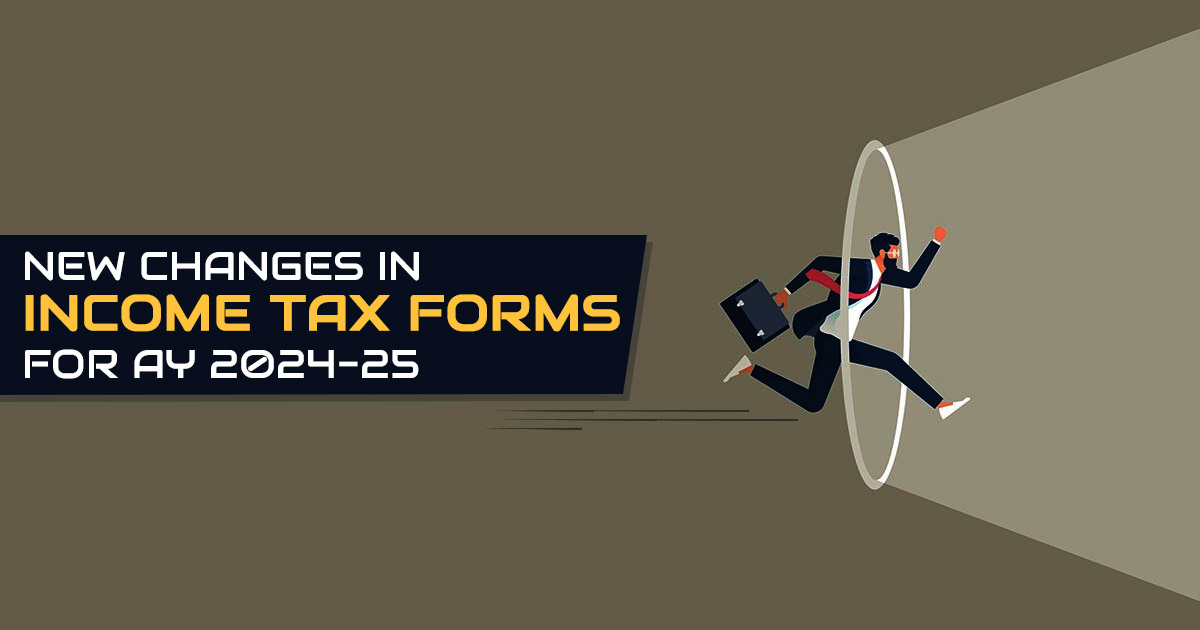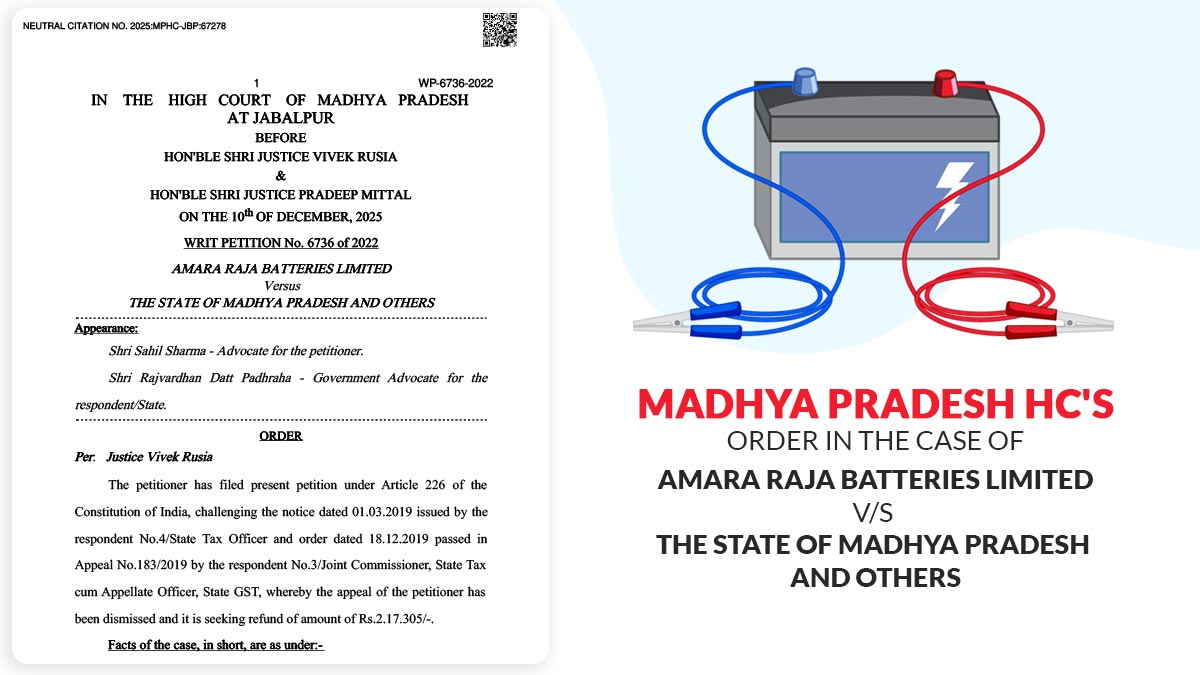
For the assessment year (AY) 2024–2025, the Central Board of Direct Taxes (CBDT) has made some changes in income tax return forms (ITR-1, 2, 3, and 4). In the past, the Centre would announce the ITR forms after the fiscal year or the beginning of the next. All the parties would have plenty of time if ITR forms were announced beforehand.
According to Amit Gupta, the founder and CEO of SAG Infotech, taxpayers may anticipate completing their income tax returns shortly after the fiscal year ends thanks to the prompt availability of forms for FY 2023–24. ITR forms for the relevant financial year were previously announced by the income tax agency in either March or April.
Recent Changes in Income Tax Forms 1 to 4 for AY 2024-25
New Income Tax Returns for the fiscal year 2024 have been introduced by the Central Board of Direct Taxes (CBDT), impacting individuals and other taxpayers. This blog mentions the significant changes across various ITR forms, emphasizing implications for taxpayers.
Changes in ITR-1 Form for AY 2024-25
ITR-1 (SUGAM): Resident individuals up to Rs. 50 lakhs income, agricultural income up to Rs. 5000/-and owning only one house property ought to cite the following:
- The taxpayer filing the ITR-1 merely needs to accept the new tax regime as the default option. He could opt out via filing Form 10-IEA under the old regime.
- Resident Individual could file ITR 1 merely when he holds only one residential property and his agricultural income does not exceed Rs. 5,000/-
- He needs to show all his bank accounts except dormant ones
- A new column was added to claim the deduction under section 80CCH in new ITR Forms 1 for Agniveers.
Latest Revisions in ITR-2 Form for AY 2024-25
ITR-2: Individuals and HUFs having income >INR 50 Lakh with income as
- Capital gains
- More than one house property
- Foreign Income
- Individual director of the company
- Holding unlisted equity shares
See the Revisions
- Legal Entity Identifier (LEI) particulars are needed to claim a refund of Rs. 50 lakhs and aforesaid.
- Contributions incurred to political parties ought to be revealed, including the date and mode of payment under Section 80GGC.
- Data on deductions claimed for the maintenance, including medical treatment, of a dependent who is an individual with a disability is needed under Section 80DD.
ITR 3 Form Changes for FY 2023-24
Business or profession income reported on Form ITR-3 by individuals and HUFs
ITR-3 Form Revisions
- FPI/FII: Should reveal SEBI registration number
- Reporting the income from Virtual Digital Assets (VDA)/crypto added under Capital Gains. Likewise, the quarterly breakdown in the Capital Gain Schedule is asked for.
- As per Section 40A(2)(b) advances received from specified individuals and others are to be reported under the “Advance” Category in Source of Fund.
- Turnover and income through intraday trading should be reported in the new section under the ‘Trading Account’ section.
- Section 80U deduction needs information on the nature of the disability, details of filing of Form 10-IA, and its acknowledgement number.
Latest Changes in Income Tax Return Form 4 for AY 2024-25
ITR -4: A person, a HUF, and a firm (excluding an LLP) with annual income above INR 50 lakh, who choose presumptive taxation
- Salaried individuals or pensioners
- Agricultural income up to INR 5000
- Individuals with presumptive income under Section 44AD, 44ADA or 44AE
ITR-4 Revisions
- A taxpayer who files the ITR 4 will need to file Form 10-IEA to opt out of the new tax regime.
- A new column has been added to claim deduction under section 80CCH in the new ITR Form 4 form.
- The “Receipts in Cash” column has been added to ITR-4 to avail of the enhanced turnover limit.
- Under Section 44AD, the turnover limit is augmented to Rs. 3 crores but cash receipts do not exceed 5%.
- The limit is Rs. 75 lakhs under Section 44ADA,
- The taxpayer is required to show all bank accounts in India
Additional Changes Related to ITR Forms for FY 2023-24
- The individual and HUF can verify tax audit reports through an electronic verification code in the case of ITR-3.
- the assessee, for the case of ITR- 3,5,6 will mention the deadline for the return filing from the drop-down menu.
- Provide the acknowledgement number for the Audit Report and UDIN (ITR 3,5,6)
- Show the sum subjected to be paid to MSME beyond the mentioned time limit (ITR 3,5,6)
- Uncover the comprehensive data related to the capital gains accounts scheme (ITR 2,3,5 & 6)
- Under Schedule 80GGC, the information for the contribution to political parties is sought in detail. (ITR 2,3,5,6)
- Schedule Tax Deferred on ESOP asks for the data as AY, amount of deferred tax brought forward, amount of tax liable to get paid in the current financial year, etc. The PAN and DPIIT registration numbers of eligible start-ups need to be shown. (ITR 2,3)
- Schedule OS included the declaration of bonus payment under LIC policies, receipt information of dividends from IFSC units (ITR 2,3,5,6)
- Startups under Section 80-IAC- The schedule asks for the information date of incorporation, nature of business, certificate number obtained from Inter-Ministerial Board, First AY-when deduction claimed, and amount of deduction availed for current AY (ITR 5 & 6)
- MSME particulars are needed such as registration status, and registration number as allotted MSME (ITR 5 & 6).
Closure: The updated ITR for FY 2024 consists of substantial changes that have the objective of increasing compliance and clarity. From the amended disclosure needs in ITR-1 to the additional information in ITR-3 for businesses and professionals, assessees must familiarize themselves with these modifications to satisfy their tax duties.
Professionals such as Chartered Accountants secure an important role in instructing the assessees via such revisions and ensuring compliance with the regulatory norms. With the ITR, compliance, or litigation, people could reach out to skilled professionals for expert assistance and guidance.
Different Kinds of Income Tax Return (ITR) Forms
- An individual with income up to 50 lakh rupees who earns income from a salary, one property, or other sources (interest, etc) may submit an ITR Form 1.
- ITR-2 is to be furnished via people who possess an income exceeding Rs 50 lakh and carrying income from residential property.
- ITR-3 by people maintaining income as profits from business/ profession.
- ITR Form 4 is an easy form that serves a lot of small and medium taxpayers.
- LLPs and enterprises file ITR-5 forms.
- Businesses submit ITR- 6, accordingly.
- Businesses as well as LLPs file ITR-6 forms.









